Rhoicissus tomentosa
| Botanical Name | Rhoicissus tomentosa |
|||||||||||
| Family | Vitaceae - The grape family. |
|||||||||||
| Pronunciation | roy-KISS-us toh-men-TOH-suh |
|||||||||||
| Common Name(s) |
English: Wild Grape; Bush Grape; African Grape; Forest Grape; Monkey Rope; Wild Vine
Afrikaans: Bosdruif; Wildedruif; Bostou; Bobbejaantou
IsiXhosa: isaQoni ; iDiliya ; uchithibhunga
IsiZulu: isiNwazi ; Isinwazana
Sesotho: Moaparo
Tshivenda: Dyathoho; Makhulu-wa-khundwi
siSwati: isiNwati
Xitsonga: Kundzu
|
|||||||||||
| Plant Group |
|
|||||||||||
| Plant Size |
|
|||||||||||
| Position |
|
|||||||||||
| General Information |
|
|||||||||||
| Specific Information | Although Rhoissus tomentosa occasionally forms a small tree, it is most often a climber, its rope-like stems reaching through and over shrubs and trees to a height of 20 meters, meandering from one tree top to the next. Young growth and tendrils are initially covered with rusty hairs which disappear with age. The large leaves are circular to kidney-shaped, smooth and shiny above with rust-coloured hairs below, usually toothed or slightly lobed. The loose bunches of rounded fruits ripen from May to June, turning from green to red to purplish-black. They are edible, with whitish flesh and a pleasant acidic flavour. They are eaten by both birds and mammals. |
|||||||||||
| Ad Break | ||||||||||||
| Flowers | ||||||||||||
| Description | small flowers in dense clusters on 2 cm stems |
|||||||||||
| Season |
|
|||||||||||
| Colour |
|
|||||||||||
| Growth Rate |
|
|||||||||||
| Plant Uses |
|
|||||||||||
| Distribution and Habitat | from the Western Cape, along the coastal strip through the Eastern Cape and KwaZulu-Natal, inland to Mpumalanga and Limpopo Province, then north to Zimbabwe and Malawi, in gorges, riverine and forest habitats, clambering through and over trees and shrubs |
|||||||||||
| Planting Suggestions | Rhoicissus tomentosa is reportedly easy to grow from seed,or stem cuttings taken in spring or summer. I have not come across it for sale in any nursery thus far. Plant rooted cuttings or sturdy seedlings in a shady spot below shrubs or trees where it can ramble. It can be used to cover a wall but will need a trellis of some sort so the tendrils will have something on which to cling. It is also attractive over a pergola or fence. It can be grown indoors - being a forest dweller it can adjust to low light. Water regularly until well established and use mulch and compost to retain moisture and ensure strong, healthy growth. The plant in my garden is completely water wise, being reliant on our erratic rainfall supply and has survived long, frequent droughts. However it is far less vigorous and slower growing than plants that receive more moisture. |
|||||||||||
| Lorraine's Garden Notes | April 2013: I was a little unsure about the use of this plant as a ground cover but I discovered that my plant has sent out quite a few tendrils along the ground in the vacant plot behind my property where it looks most attractive. I tried with ladder and rake to reach some fruit to pick as I want to taste it, and collect some seeds, but was unsuccessful. The fruit forms right at the upper levels, way beyond my reach. Oh well - the birds are enjoying them, especially the beautiful Knysna Tauraco (Tauraco corythaix), previously classified as the Knysna loerie. |
|||||||||||
| Medicinal Uses | In traditional medicine poisonous, tuberous rootstock is boiled in milk and used as a vermifuge for calves. The more flexible branches are used to tie down thatching and in basket making. The ripe fruits can be used for jam, wine and vinegar. |
|||||||||||
| Ad Break | ||||||||||||


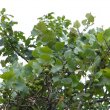
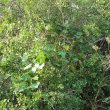
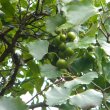
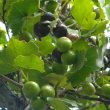
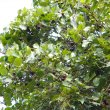
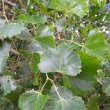
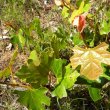
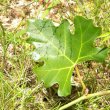
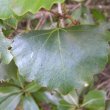


Discuss this plant
Share knowledge, ask a question or give an experience.